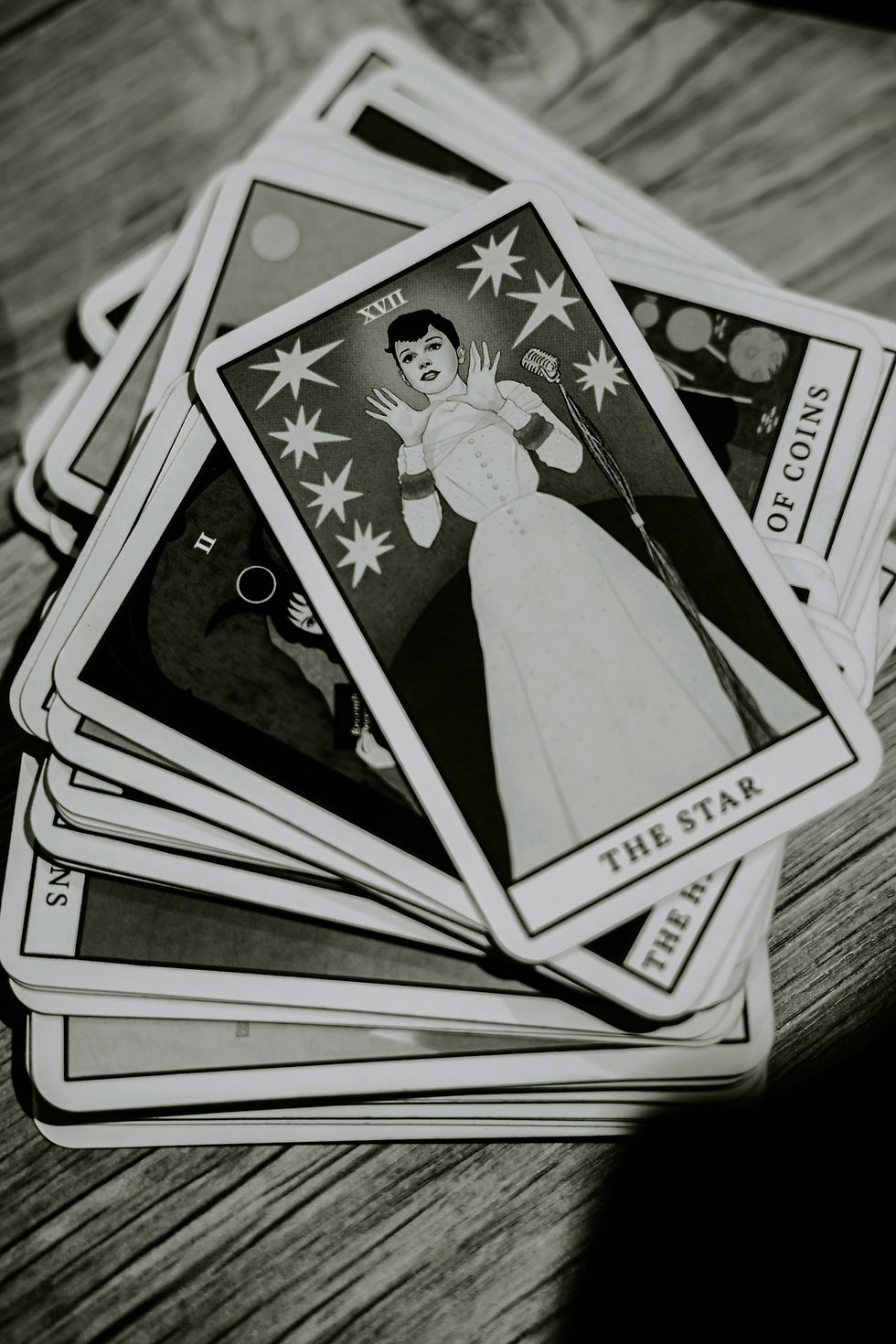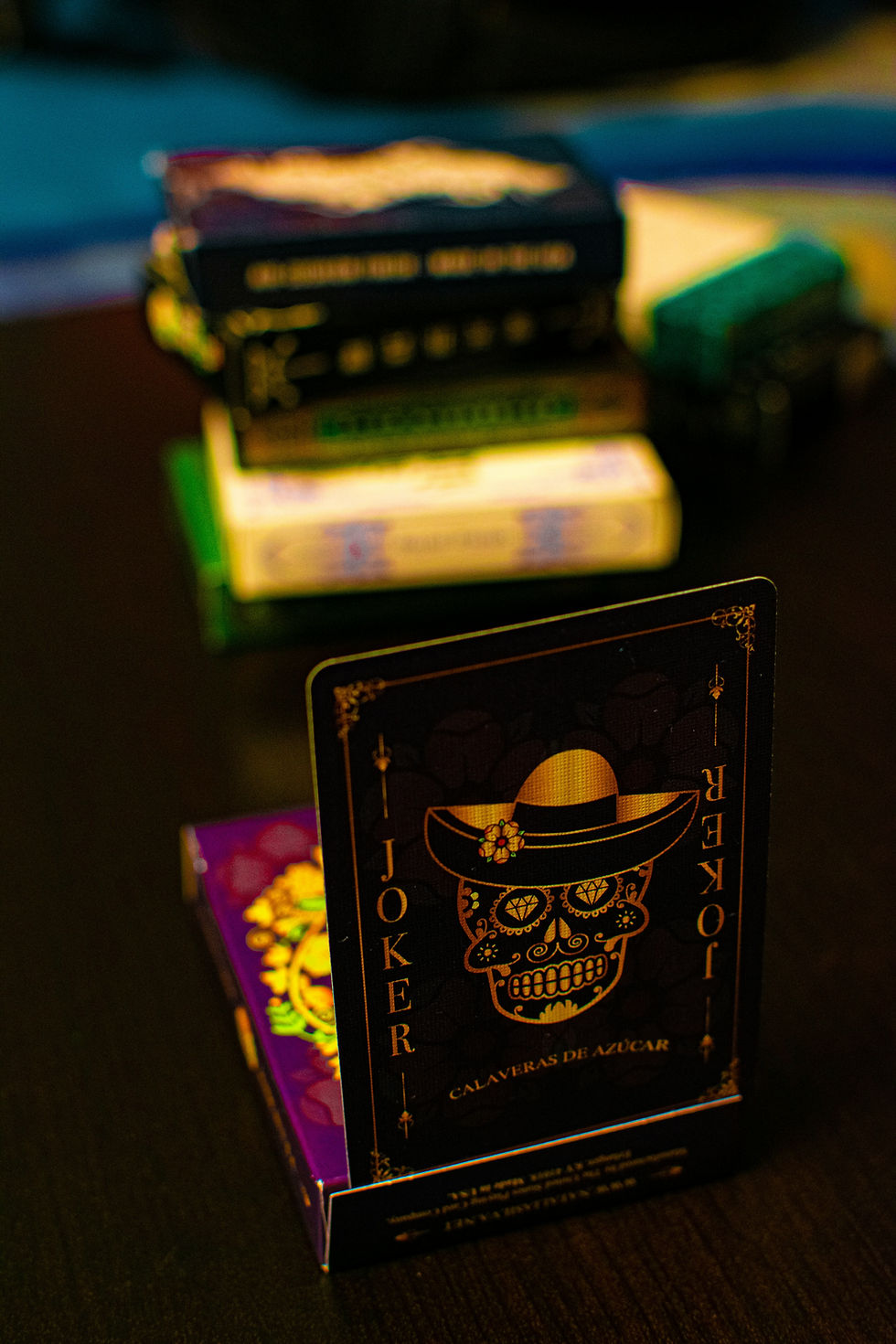When a Tarot Card Keeps Coming Back: A Love Letter to the Lesson You’re Still Learning
- Suzanne Butler

- Jul 22
- 5 min read

You know the feeling.
You shuffle, pull, flip the card—and there it is. Again.
The same one. The one that’s been following you around like a stray cat you accidentally fed once and now can’t shake.
At first, it felt cool. Mystical, even. “Ooh, synchronicity!” But now it’s Day Four and you're wondering if your deck is stuck, if the Universe is trying to mess with you, or if you’re just cosmically hard of hearing.
It’s disorienting. A little annoying. And—if you’re honest—a touch confronting. But here’s what you need to know: when a tarot card shows up again and again, it’s not a glitch. It’s a signal. Not a warning. Not a punishment. A quiet, persistent knock at the door of your awareness.
And if you’re willing to open that door instead of hiding under the bed, there’s a surprising amount of healing to be found there.
The Gentle Weight of Repetition
There’s a reason repetition is used in rituals, poetry, healing. What comes back again and again shapes us. It lays down grooves in our attention, asks us to look again—closer this time.
In tarot, repeated cards are rarely random. They're an echo of something that's already stirring inside you.
They’re not telling you the same thing on repeat like a stuck tape—they’re deepening the message each time it arrives. First a whisper. Then a murmur. Then, if needed, a good-natured shout.
This isn’t about being punished for missing the point. It’s about your system doing exactly what it’s supposed to do when something important is surfacing: returning to it until it’s metabolised.
A Familiar Card, A New Conversation
Let’s say you keep pulling the Hanged Man. The first time, you read it as a reminder to pause. The second time, maybe it felt more like surrender. But by the third, fourth, fifth pull? Something in you starts asking different questions.
What am I resisting? What’s unraveling underneath all this stillness? What would I have to feel if I stopped trying to fix it all?
That’s the shift. The card hasn’t changed. You have.
Repeated pulls become an evolving conversation between you and your psyche. The kind that’s layered and nuanced and never quite finished. That’s not a glitch—it’s a living relationship with the archetypes, with your own story.
A Story From the Field (Let’s Call Her Neve)

She’s also started a new tarot practice: one card every morning, no clarifiers, no drama. Just a pulse check.
Week one: The Moon.
She nods. “Uncertainty. Intuition. Mystery. Got it.”
Week two: The Moon again.
And again. And again. Seven out of ten days.
She gets suspicious. Changes decks. Gets the Moon.
And here’s the part that matters: she doesn’t discard it. She leans in.
She begins to notice how much she’s been trying to “figure everything out.” How allergic she’s become to the unknown. How badly she wants to be in control again. The Moon, it turns out, wasn’t just about uncertainty—it was about her relationship to it.
Once she stopped fighting the card, she stopped fighting herself. It didn’t make everything suddenly clear. But it helped her soften into the fog, instead of bracing against it.
Why We Pull the Same Card Over and Over
There’s no single reason—but there are patterns. Not mystical rules, but quiet observations:
Sometimes it’s emotional. You’re avoiding a feeling, and the card is holding space for it until you’re ready.
Sometimes it’s relational. A dynamic in your life is mirroring something deeper, and the card is drawing a line between the two.
Sometimes it’s seasonal. An archetype is moving through you slowly, and the card is showing you the pace of that unfolding.
And sometimes? It’s just that your inner world is louder than your outer one, and tarot is reflecting that imbalance back at you.
The key isn’t to decode the card like a cipher. It’s to spend time with it. Let it teach you something you didn’t know you needed.
What If It’s a “Hard” Card?

Let’s talk about those.
The Tower. The Devil. Three of Swords. Ten of Swords. Cards that have a way of making your stomach drop, especially when they won’t go away.
It’s tempting to treat these like warnings or punishments. But healing doesn’t work that way. Healing invites us to name what hurts, not to avoid it.
If a difficult card is repeating, consider the possibility that you’re being given a symbolic language for what you haven’t been able to say out loud yet. Not “This will happen to you,” but: “This is already happening, in some quiet way. Let’s name it.”
That kind of naming is powerful. And brave. And healing. Because what you name, you can hold. And what you hold, you can begin to tend to.
There’s No Spiritual Report Card
One of the sneakiest myths in the self-development world is the idea that we “graduate” from lessons. That once we “get” the message, the card will stop appearing. That healing is linear. That growth is a straight upward slope.
But life rarely works that way.
Sometimes, you pull the same card because you're circling back to a deeper layer of something you’ve already touched. It’s not failure. It’s spiral learning. Like grief. Or forgiveness. Or trusting yourself again.
Each time the card returns, it’s not saying “You’re still stuck.” It might just be saying, “You’re ready now to feel a little more of this.” That’s not regression. That’s capacity-building.
How to Work With a Repeating Card (Instead of Just Tolerating It)
You don’t need a list—but here are a few gentle ways to engage when a card keeps returning:
Write a letter to the card. Ask it what it’s trying to show you. Then answer as the card, and see what comes through.
Track the context. When does it show up? Around certain people, moods, decisions? Patterns often reveal themselves in proximity.
Use the card as a lens. Try viewing your day through the energy of the card. What shifts in your interpretation of events?
Create a ritual. Not to banish the card, but to acknowledge it. Light a candle, name what you’re learning, and thank it. Ritual helps the psyche integrate.
Stop asking why. Sometimes the healing happens not in the analysis, but in the quiet willingness to just stay with what’s uncomfortable.
And if all else fails? Take a break from pulling. Go walk in the woods. Wash your sheets. Let the wisdom settle without needing to wring more insight from it.
When the Card Finally Changes
There’s a moment—quiet, often unexpected—when the card doesn’t come. You shuffle. You pull. It’s something else. Not because you finally unlocked the lesson. But because something in you shifted. You met the message, not perfectly, but with honesty. You let it land. And now the deck is responding to where you are, not where you were.
It’s not always dramatic. Sometimes the shift is subtle, barely felt. But you’ll notice a new note in the day. A lightness. A different angle of the sun.
And that too is magic.
In the End, It’s Not About the Card
It’s about what the card reveals in you. The places that are still tender. The truths you’re just now beginning to live into. The versions of yourself that are quietly waiting to be re-met.
When a card returns again and again, it’s not dragging you back. It’s walking with you through the part of the journey you haven’t named yet. So instead of asking, “Why won’t this card go away?” try asking: “What part of me is still learning to stay?”
And let that question be the start of something softer.
Liked this piece? Follow me for more soulful tarot reflections, healing frameworks, and tools for intuitive growth. Or visit www.the-healing-tarot.com to explore our courses and offerings.






this is such a lovely introduction to how Tarot is such an important tool in the toolkit we need to gather in order to heal ourselves, this post is beautifully written and so infomative, thankyou x🩷